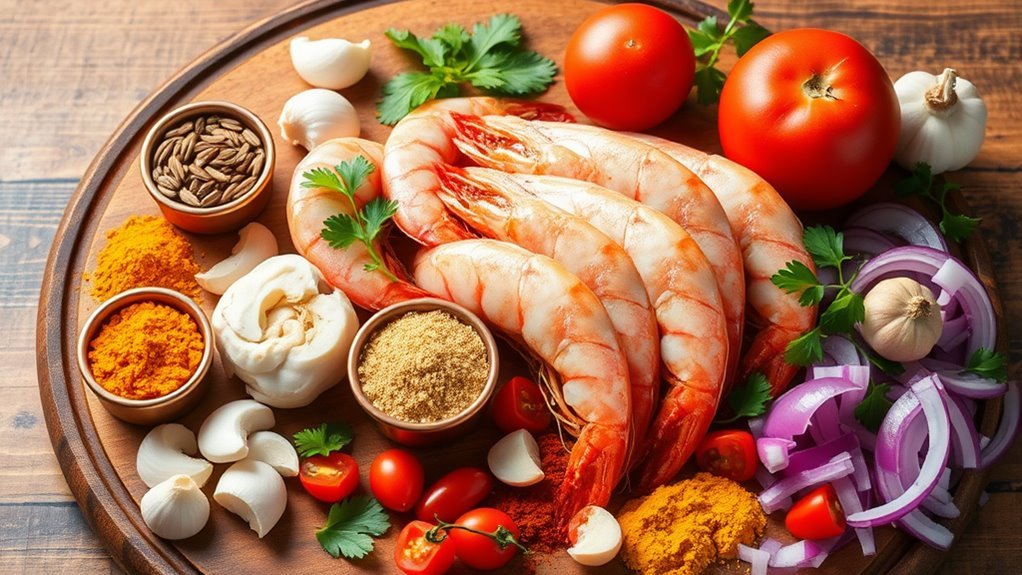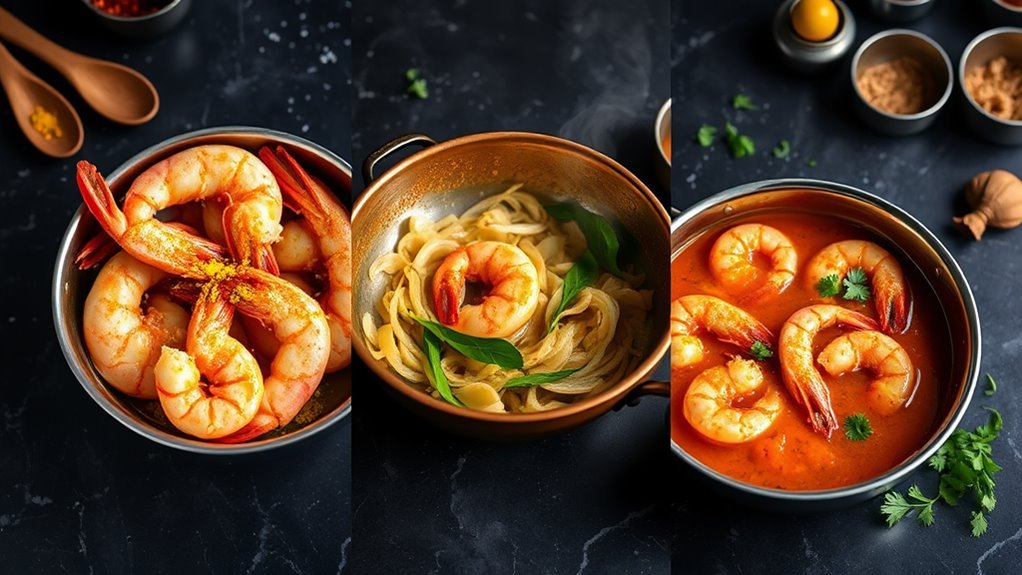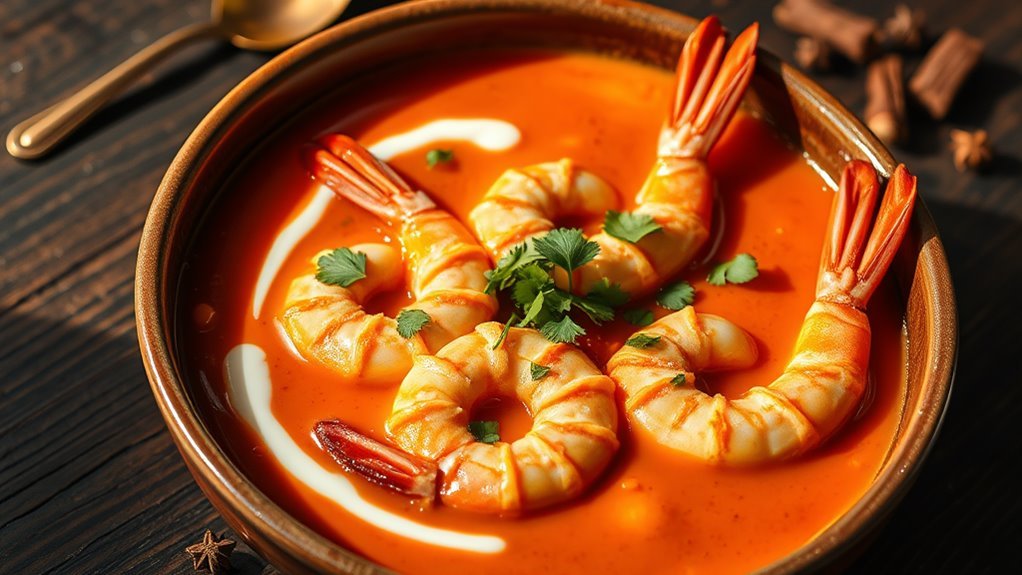Welcome to the delightful world of Prawn Curry, or as some like to call it, Jhinga Curry. Now, let me tell you, this dish isn’t just a meal; it’s a whole experience! Picture this: juicy prawns nestled in a robust, aromatic curry sauce that’s got just the right kick to it. We’re talking about a blend of spices that brings warmth and depth, all wrapped up in a touch of creamy coconut goodness.
This recipe is a classic that’s been enjoyed around the coastlines of India and has made its way onto tables all over the globe. It’s simple enough for a weeknight dinner, yet special enough to impress guests, making it a versatile addition to your cooking repertoire. So, grab your apron and let’s dive into the step-by-step process of creating this flavorful dish that’s stood the test of time. Trust me, once you get a whiff of that simmering curry, you’ll be hooked!
Ingredients

A classic prawn curry combines fresh seafood with aromatic spices and creamy coconut base, drawing from both coastal Indian and South Asian culinary traditions. The dish balances the natural sweetness of prawns with the warmth of spices and rich, velvety sauce, incorporating essential elements like onions, tomatoes, and ginger-garlic paste for depth of flavor. The best prawns for this dish should be firm to touch, indicating optimal freshness and quality.
Recipe

Prawn curry is a beloved dish across coastal regions, combining succulent seafood with aromatic spices and rich gravy. The preparation method varies by region, from coconut-based curries in coastal areas to tomato-based versions inland. This recipe crafts a delicious onion and tomato-based curry that delivers authentic flavors.
This recipe follows a South Indian style, creating a balanced curry with a tomato-onion base that allows the prawns’ natural sweetness to shine through while incorporating classic Indian spices for depth and warmth.
| Ingredient | Quantity |
|---|---|
| Large prawns, deveined | 500g |
| Onions, finely chopped | 2 medium |
| Tomatoes, chopped | 3 medium |
| Ginger-garlic paste | 2 tablespoons |
| Turmeric powder | 1/2 teaspoon |
| Red chili powder | 1 teaspoon |
| Coriander powder | 1 tablespoon |
| Cumin powder | 1 teaspoon |
| Vegetable oil | 3 tablespoons |
| Curry leaves | 10-12 leaves |
| Salt | to taste |
| Fresh coriander leaves | for garnish |
Heat oil in a large pan over medium heat; add curry leaves and sauté onions until golden. Add ginger-garlic paste and cook until fragrant. Stir in tomatoes and spice powders, cooking until oil separates. Add prawns, salt, and cook for 5-7 minutes until they turn pink. Adjust consistency with water if needed, simmer for 2-3 minutes, and garnish with fresh coriander.
For best results, avoid overcooking the prawns as they can become tough and rubbery. Clean and devein prawns thoroughly before cooking, and marinate them briefly in turmeric and salt for extra flavor. The curry can be made spicier by adjusting the chili powder, and consistency can be altered by adding water or reducing the gravy further.
Cooking Tips

While mastering a delicious prawn curry might seem intimidating, we’ll share essential tips that’ll transform your cooking experience.
Let’s start with proper prawn prep – we always devein first and give them a thorough rinse before patting them completely dry. This prevents unwanted splashing during cooking.
For the best flavor, we recommend marinating your prawns in turmeric, chili, and salt.
When it comes to spices, we’re passionate about roasting them fresh. Start by tempering whole spices like cinnamon and cardamom in hot oil, then add your ground masalas.
Don’t forget to experiment with coconut – it adds incredible depth and creaminess. Monitoring your prawn cooking time carefully is crucial to avoid a rubbery texture.
History

This beloved dish has evolved through centuries of cultural exchange and culinary innovation.
We can trace its roots to the Tamil word “kari,” meaning sauce or relish, which Portuguese traders later adapted to “caril.” The arrival of chili peppers after 1500 transformed traditional recipes, while British colonization led to interesting adaptations. Archaeological evidence shows spices like mustard and cumin were used in Indian cooking as far back as 2600 BCE.
We’ve seen remarkable regional variations develop, from Kerala’s coconut milk-based versions to Bengal’s mustard-infused preparations. Portuguese influences gave us classics like vindaloo, while Indo-British fusion created milder, cream-enriched versions.
Today’s prawn curry reflects this rich tapestry of cultural exchanges.
Final Thoughts

Looking back at our journey through prawn curry’s rich heritage, we can’t help but marvel at how this versatile dish brings together incredible nutrition, diverse cooking methods, and adaptable dietary options.
Whether you prefer the coconut-rich Thai version or the spice-forward Indian preparations, there’s a style that fits every taste and dietary need. With its high omega-3 content, prawn curry is particularly beneficial for maintaining cardiovascular health. We love how easily it adapts – from low-carb to high-protein variations – while maintaining its delicious character.
With mindful preparation focusing on portion control and smart ingredient choices, prawn curry stands as a showcase of culinary innovation that’s both healthy and satisfying.

